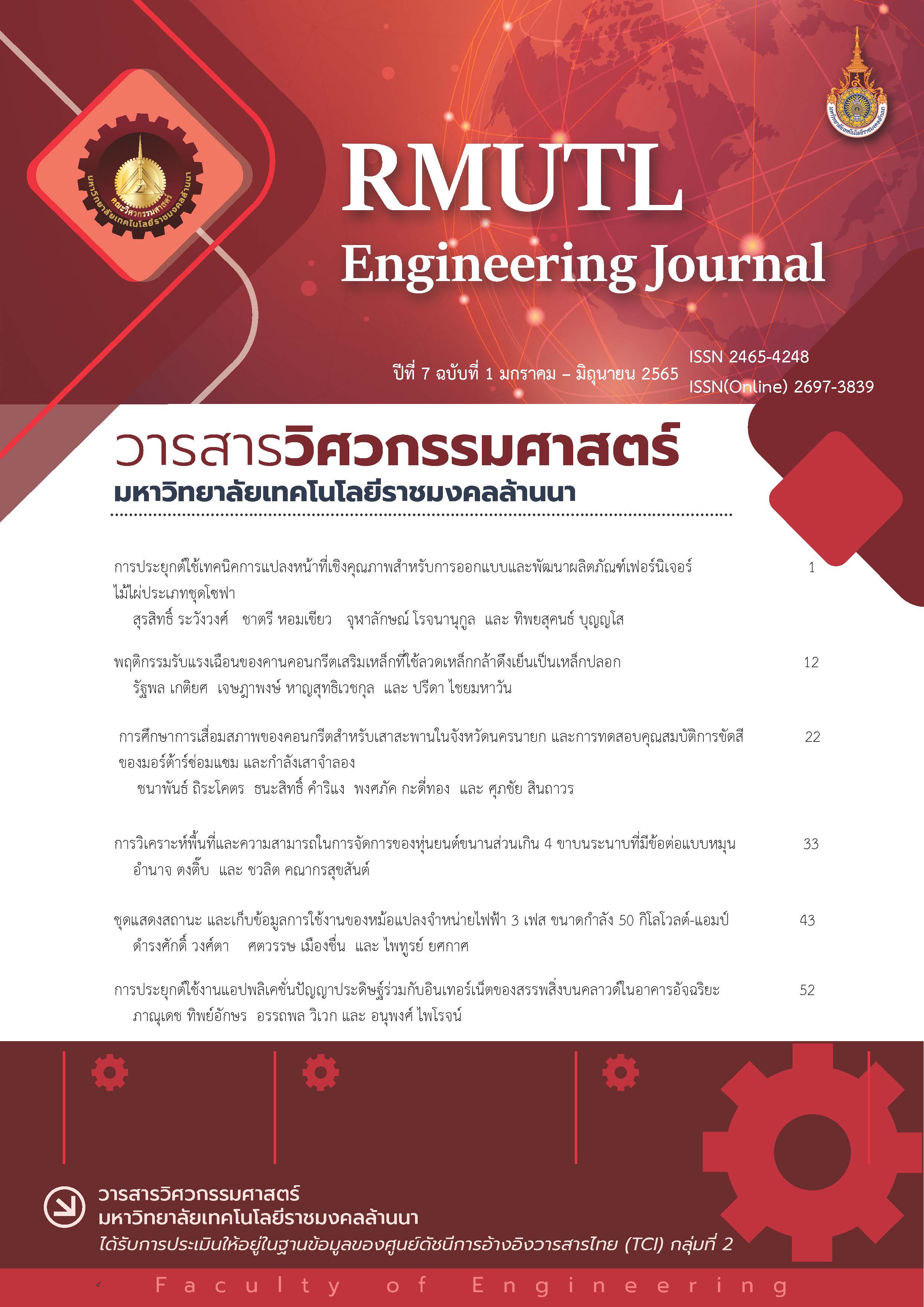A Study of Concrete Deterioration for Bridge Column in Nakhon Nayok Province and the Abrasion Test of Repairing Mortar and Experiment of Column Models
DOI:
https://doi.org/10.14456/rmutlengj.2022.3Keywords:
Reinforced Concrete, Pier, Repair, Erosion, Sodium Silicate, DeteriorationAbstract
This project aimed to study the deterioration of concrete piers in bridge. The residual capacity of reinforced concrete deteriorated columns were studied through two selected deterioration types which are smooth surface deterioration and rough surface deterioration. The tested models of reinforced concrete column were generated as the short column specimen, 20x20x60 cm. The abrasion resistance of repairing mortars and the capacity of columns were experimented by Rotating-Cutter Method which is modified from ASTM C944. The result shows that the capacity of smooth surface deteriorated column decreases by 4.13% whereas that of rough surface deteriorated column decreases by 7.67%. The rough surface models were repaired by plastering mortar and apply sodium silicate on the surface. After plastering, strength of the repaired columns was increased by 12.34%. In addition, the repairing material shows that plastering mortar with sodium silicate demonstrates higher abrasion resistance 0.3% by weight than normal mortar, and compressive strength increases by 6.41%.
References
Sujjavanich S. Advanced Concrete Technology. Bangkok: Rojchana Printing Limited Partnership; 2017. Thai.
Dechpolmataya S, Sinthaworn S. Deterioration of Concrete Bridges of the Rural Road Department. Annual Concrete Conference 6th ,2010 October 20-22, Phetburi, Thailand. Thai.
Tuantong T, Tangchirapat W, Jaturapitakkul C, Songpiriyakij S. Abrasion Resistance and Rapid Chloride Permeability of Concrete Coated with Sodium Silicate Solution. KMUTT Research and Development Journal. 2019;30(1): 55-68. Thai.
Srinakharinwirot university. Development plan for rural road (the 3rd phase). PTE Engineering Co. Ltd. Report number: 1, 2019. Thai.
Liu WY, Yen T, Hsu TH. Abrasion Erosion of Concrete by Water-borne Sand, Cement and Concrete Research. 2006;36: 1814-1820.
Yang Y, Ji T, Lin X, Chen C, & Yang Z. Biogenic sulfuric acid corrosion resistance of new artificial reef concrete. Construction and Building Materials. 2018; 158: 33-41.
Trejo D. Analysis and assessment of microbial biofilm - mediated concrete deterioration. Dissertation, Ph.D.(Departmentof Transportation). United States of America: Graduate school University Transportation Centers; 2008.
Downloads
Published
How to Cite
Issue
Section
License
Copyright (c) 2022 วารสารวิศวกรรมศาสตร์ มหาวิทยาลัยเทคโนโลยีราชมงคลล้านนา

This work is licensed under a Creative Commons Attribution-NonCommercial-NoDerivatives 4.0 International License.










